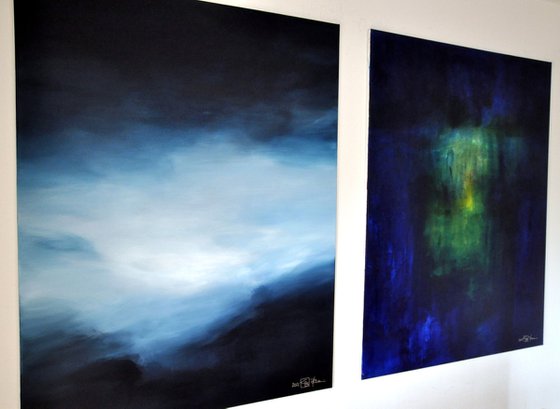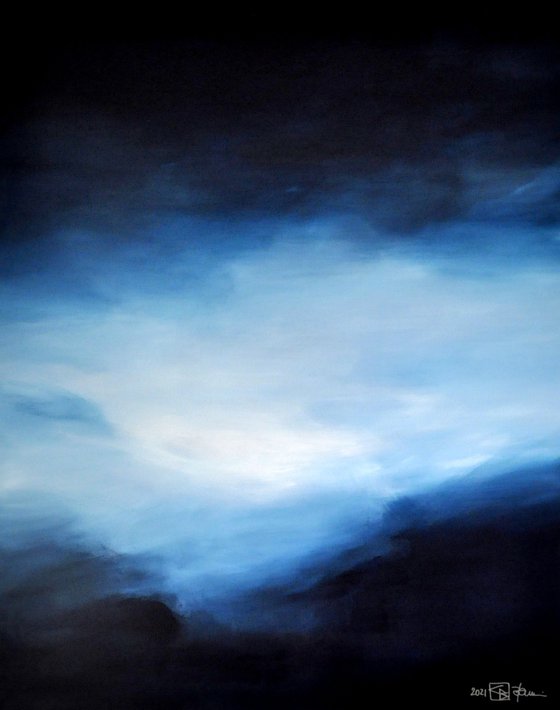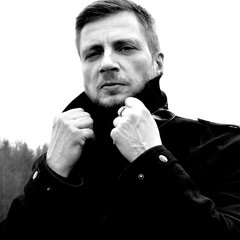Original artwork description:
ALL ENDS IN SILENCE IN PASSCHENDAELE
2021
150 (h) x 120 (w) x 2 cm
59,1 (h) x 47,2 (w) x 0,79 in
acrylic and oil on canvas
Coronavirus series
The Battle of Passchendaele (also known as Third Battle of Ypres) was a campaign of the First World War, fought by the attacking Allies (Belgian, French, British Expeditionary Force and Canadian Expeditionary Force) against the defensive German Empire, near the Belgian city of Ypres in West Flanders, from July to November 1917. Men went into battle because the politicians told them this was the decisive war that would end all wars. But nothing but horror and death awaited them. The battle ended with the conquest of the small village of Passchendaele, but there were hundreds of thousands of casualties in this offensive. More than 600,000 soldiers died here in just 100 days for a small shift of the front line. The campaign was controversial and has remained so. Especially the effect of the exceptional weather, the decision to continue the offensive in rainy October and the human costs of the battle are also debated. That is why the Flanders Offensive now stands for the brutality and senselessness of this war.
* * *
“This is a war to end all wars.”
~ Woodrow Wilson (President of the United States), 1917
As statements to counter President Woodrow Wilson's words:
"Only the dead have seen the end of war.”
~ George Santayana (Spanish author), 1922
“This war, like the next war, is a war to end war.”
~ David Lloyd George (British Prime Minister), 1917
* * *
About the background:
This painting is one of a monochrome series of current works that artistically deal with the subject of the coronavirus and the effects. There is an existential threat that is not exactly tangible, remains diffuse and yet dominates everything. What does this pandemic do to the individual? What will remain of this strangely depressing time? Sometimes a look at history helps. In modern history, how did previous generations deal with such dramatic episodes? And we understand, there were dramas of completely different dimensions that humans are able to cope with.
A war of annihilation raged around a hundred years ago (1914 - 1918) that set the entire world on fire and changed everyone: The First World War is the key event of the 20th century and is still having an impact today. The history books contain the names of the generals and the great battles. But what about the normal individual, the one in the trenches as well as the families who struggled for survival back home? How did you think, how did they feel in the midst of an existential threat that they had no control over?
The photos of the battlefields of the First World War, in particular the fighting on the Western Front in Flanders, before Verdun and on the Marne and Somme (between German, French, British, American, Belgian, Australian, New Zealand, Portuguese, and Canadian soldiers) formed the con-crete template for these paintings. The monochrome color scheme of the paintings, dominated by Prussian Blue, refers to the historical black and white photos. The letters that the soldiers at the front wrote back home are well documented. And anyone reading this field post today will notice that the men in the armies (and their families) thought and felt alike despite their opposition. And even more, how similar people were to us with all their hopes and fears at the beginning of the 20th century, more than we probably want to admit.
Today these battlefields have been renatured. The fields and forests are quiet and peaceful, and almost nothing gives an inkling of the earlier horror, the trenches, and mass armies that generated unprecedented destructive power with modern weapons. What determined the fate of millions of people is now only a fading memory. And this is exactly what the artworks in this series of paintings tell about. There is a fundamental insight: every horror has an end at some point. The chance to shape life individually and freely again will return. The coronavirus will only remain a temporary episode in all of our lives. And in a hundred years at the latest we won't even remember what is troubling us now, what caused it, whether it was good or bad, and whether it was a medical or a human disaster. The dark fades (too) quickly. Man is a survivor and always looks ahead. And that's how I want the paintings in this series to be understood, despite the difficult subject, as signs of firm hope.
* * *
This painting is a LARGE-SIZED artwork and offers an aesthetic impression on your wall AND as my authentic and personal artwork an artistic subsurface message.
I use exclusively oil and acrylic colors, canvas and wooden frames in a professional museum quality. The paintings wears my signature on the front and is signed, entitled and dated on the backside. Deliberately the sides are not a part of the painting and in dark Prussian Blue. The painting is ready to hang (on the backside: high-quality iron plates with metal inserts and nylon rope for gallery use), unframed and doesn’t need a frame or any additional surface treatment. The piece will be safely shipped in a custom wooden crate. It will be accompanied by a certificate of authenticity and a cover letter.
Please note: In context pictures are not necessarily to scale and are for illustrative purposes only. If you have any questions about this artwork or any other piece, feel free to contact me and I’ll get back to you as soon as I can.
Thanks so much for taking an interest in my work.
Warm wishes,
Christian
Materials used:
acrylic and oil on canvas
Tags:
#storm #hope #history #pandemic #world war 1ALL ENDS IN SILENCE IN PASSCHENDAELE (2021)
Acrylic painting
by CHRISTIAN BAHR
1 Artist Reviews
£4,359.38 Sold
- Acrylic painting on Canvas
- One of a kind artwork
- Size: 120 x 150 x 2cm (unframed) / 120 x 150cm (actual image size)
- Ready to hang
- Signed on the front
- Style: Organic
- Subject: Abstract and non-figurative
Do you like this artwork?
This artwork has sold, but the artist is accepting commission requests. Commissioning an artwork is easy and you get a perfectly personalised piece.
Original artwork description
ALL ENDS IN SILENCE IN PASSCHENDAELE
2021
150 (h) x 120 (w) x 2 cm
59,1 (h) x 47,2 (w) x 0,79 in
acrylic and oil on canvas
Coronavirus series
The Battle of Passchendaele (also known as Third Battle of Ypres) was a campaign of the First World War, fought by the attacking Allies (Belgian, French, British Expeditionary Force and Canadian Expeditionary Force) against the defensive German Empire, near the Belgian city of Ypres in West Flanders, from July to November 1917. Men went into battle because the politicians told them this was the decisive war that would end all wars. But nothing but horror and death awaited them. The battle ended with the conquest of the small village of Passchendaele, but there were hundreds of thousands of casualties in this offensive. More than 600,000 soldiers died here in just 100 days for a small shift of the front line. The campaign was controversial and has remained so. Especially the effect of the exceptional weather, the decision to continue the offensive in rainy October and the human costs of the battle are also debated. That is why the Flanders Offensive now stands for the brutality and senselessness of this war.
* * *
“This is a war to end all wars.”
~ Woodrow Wilson (President of the United States), 1917
As statements to counter President Woodrow Wilson's words:
"Only the dead have seen the end of war.”
~ George Santayana (Spanish author), 1922
“This war, like the next war, is a war to end war.”
~ David Lloyd George (British Prime Minister), 1917
* * *
About the background:
This painting is one of a monochrome series of current works that artistically deal with the subject of the coronavirus and the effects. There is an existential threat that is not exactly tangible, remains diffuse and yet dominates everything. What does this pandemic do to the individual? What will remain of this strangely depressing time? Sometimes a look at history helps. In modern history, how did previous generations deal with such dramatic episodes? And we understand, there were dramas of completely different dimensions that humans are able to cope with.
A war of annihilation raged around a hundred years ago (1914 - 1918) that set the entire world on fire and changed everyone: The First World War is the key event of the 20th century and is still having an impact today. The history books contain the names of the generals and the great battles. But what about the normal individual, the one in the trenches as well as the families who struggled for survival back home? How did you think, how did they feel in the midst of an existential threat that they had no control over?
The photos of the battlefields of the First World War, in particular the fighting on the Western Front in Flanders, before Verdun and on the Marne and Somme (between German, French, British, American, Belgian, Australian, New Zealand, Portuguese, and Canadian soldiers) formed the con-crete template for these paintings. The monochrome color scheme of the paintings, dominated by Prussian Blue, refers to the historical black and white photos. The letters that the soldiers at the front wrote back home are well documented. And anyone reading this field post today will notice that the men in the armies (and their families) thought and felt alike despite their opposition. And even more, how similar people were to us with all their hopes and fears at the beginning of the 20th century, more than we probably want to admit.
Today these battlefields have been renatured. The fields and forests are quiet and peaceful, and almost nothing gives an inkling of the earlier horror, the trenches, and mass armies that generated unprecedented destructive power with modern weapons. What determined the fate of millions of people is now only a fading memory. And this is exactly what the artworks in this series of paintings tell about. There is a fundamental insight: every horror has an end at some point. The chance to shape life individually and freely again will return. The coronavirus will only remain a temporary episode in all of our lives. And in a hundred years at the latest we won't even remember what is troubling us now, what caused it, whether it was good or bad, and whether it was a medical or a human disaster. The dark fades (too) quickly. Man is a survivor and always looks ahead. And that's how I want the paintings in this series to be understood, despite the difficult subject, as signs of firm hope.
* * *
This painting is a LARGE-SIZED artwork and offers an aesthetic impression on your wall AND as my authentic and personal artwork an artistic subsurface message.
I use exclusively oil and acrylic colors, canvas and wooden frames in a professional museum quality. The paintings wears my signature on the front and is signed, entitled and dated on the backside. Deliberately the sides are not a part of the painting and in dark Prussian Blue. The painting is ready to hang (on the backside: high-quality iron plates with metal inserts and nylon rope for gallery use), unframed and doesn’t need a frame or any additional surface treatment. The piece will be safely shipped in a custom wooden crate. It will be accompanied by a certificate of authenticity and a cover letter.
Please note: In context pictures are not necessarily to scale and are for illustrative purposes only. If you have any questions about this artwork or any other piece, feel free to contact me and I’ll get back to you as soon as I can.
Thanks so much for taking an interest in my work.
Warm wishes,
Christian
Materials used:
acrylic and oil on canvas
Tags:
#storm #hope #history #pandemic #world war 1Returns and refunds
We want you to love your art! If you are not completely satisfied with your purchase you can return it free within 14 days, no questions asked. Learn more
Artist Reviews (1)
This artwork is sold by CHRISTIAN BAHR from Germany








